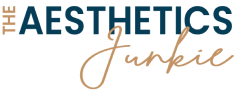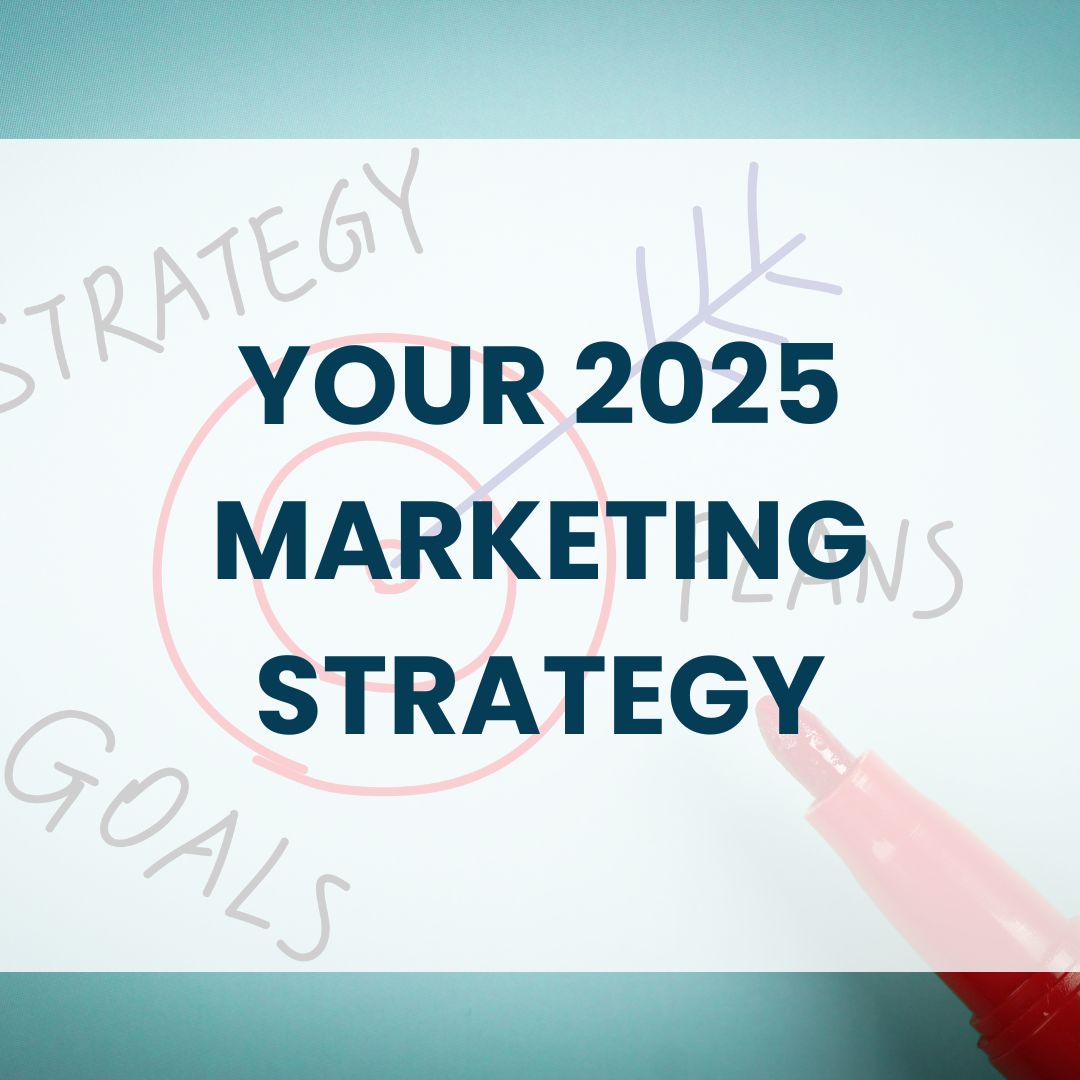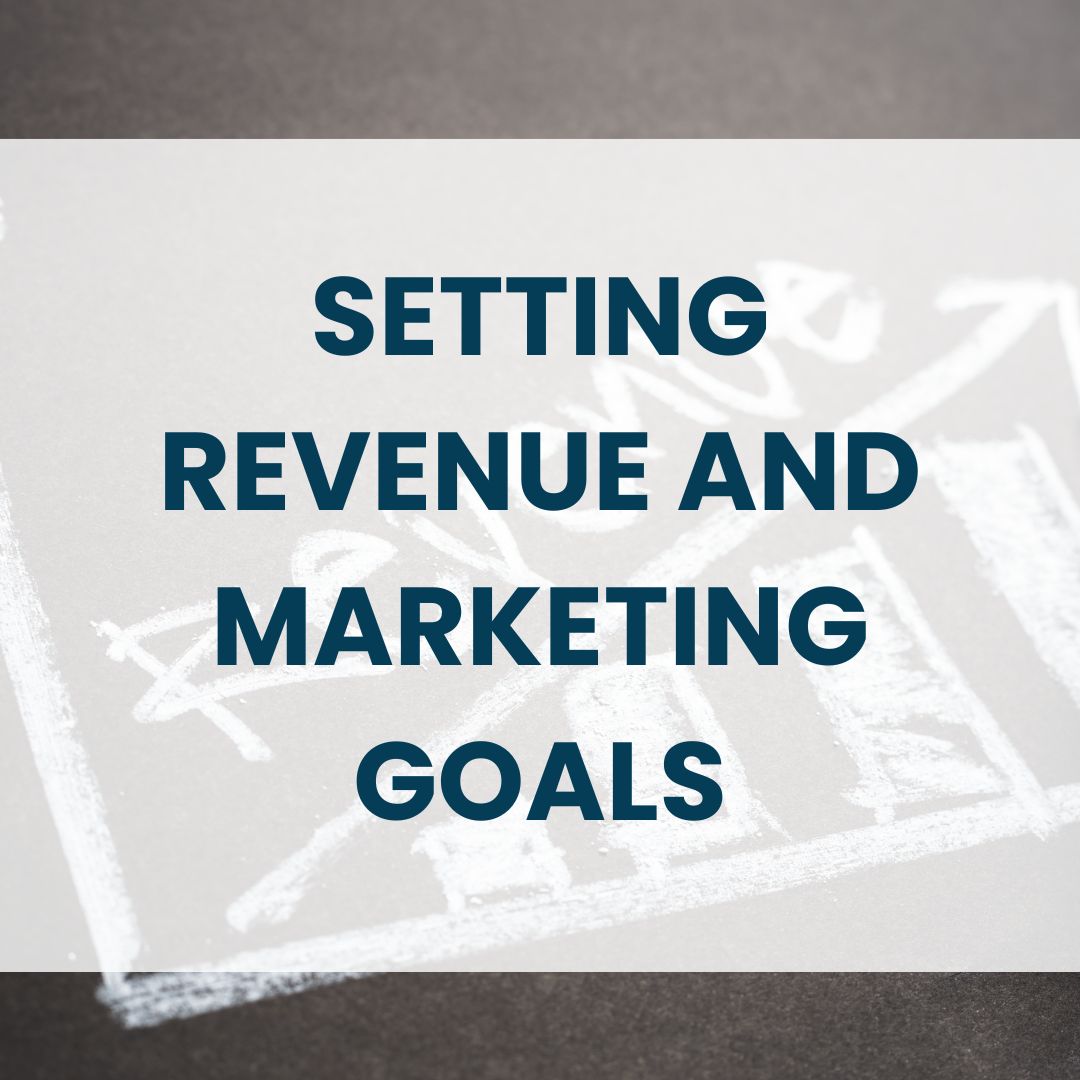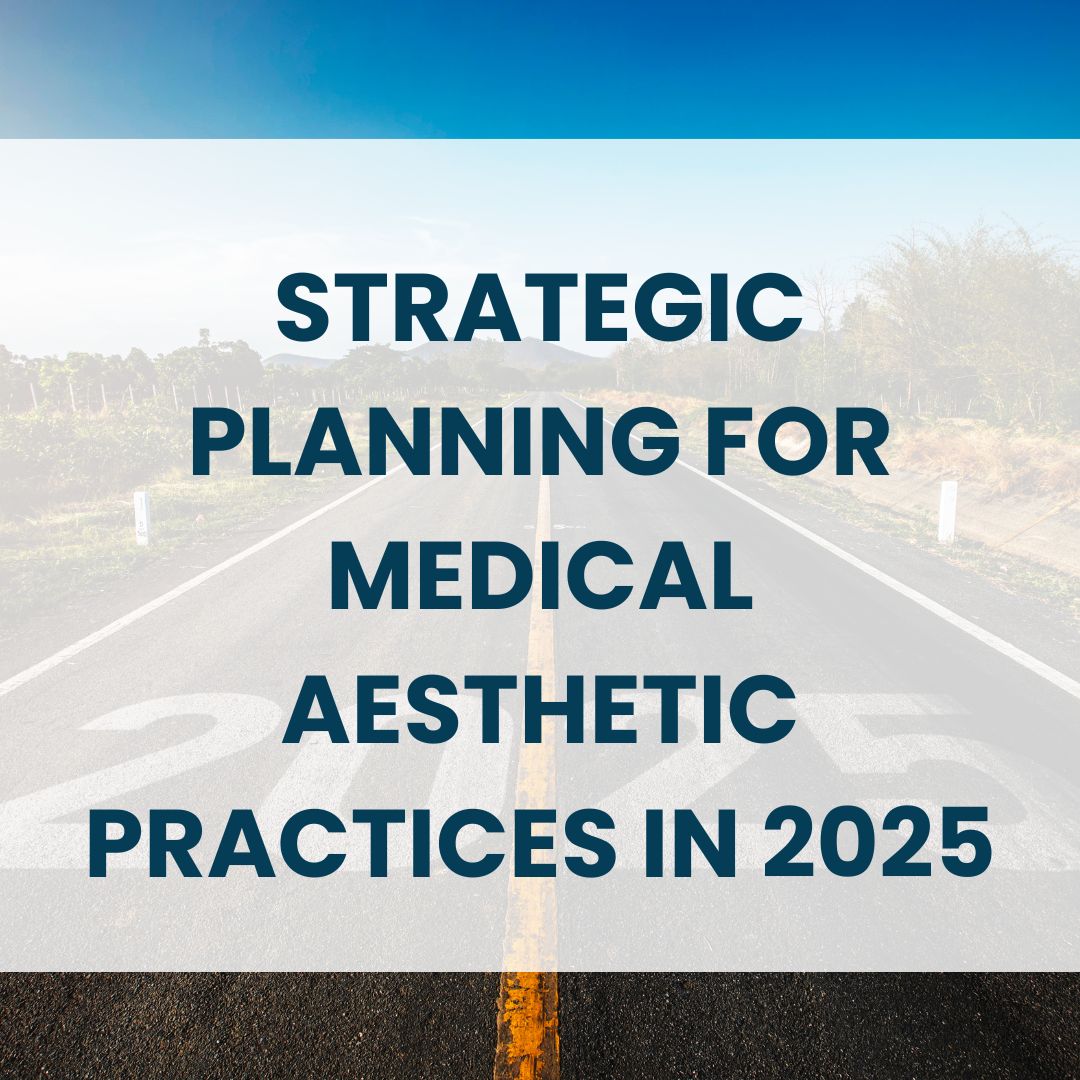Insights from Dr. Johnny Franco, President of the Austin Society of Plastic and Reconstructive Surgeons and founder of Austin Plastic Surgeon
Why Social Media Became Non-Negotiable for Aesthetic Practices
Dr. Johnny Franco learned a brutal lesson early in his career. After finishing his fellowship and starting practice, he watched incredibly skilled plastic surgeons sitting in empty offices while less talented practitioners had waiting lists stretching six to nine months.
The difference wasn’t surgical ability. It was marketing.
“I think we’re almost doing our patients a disservice by not being on social media,” Dr. Franco explains, “because patients are gonna get their education somewhere. If it’s not from the experts, we’re doing a disservice by not educating them.”
This shift represents more than just marketing evolution. The aesthetic medicine landscape has fundamentally changed. Patients don’t just hear a referral and book an appointment anymore. They research, compare, and evaluate practices through social media before ever picking up the phone.

The Anti-Marketing Culture That Nearly Killed Practices
Plastic surgery has a complicated history with marketing. Dr. Franco shares a story that perfectly illustrates this: “Before the big mega conferences, we actually had this traveling group of plastic surgeons… and the very first person to ever be kicked out of the group got kicked out because they advertised in the Yellow Pages.”
This anti-marketing mentality persisted for decades, creating a massive gap between clinical excellence and business success. Today, that gap separates thriving practices from struggling ones.
How Patients Really Find You Now
When someone refers a patient to you today, here’s what actually happens:
- They Google your name
- They immediately check your Instagram and social media
- If they don’t find relevant content, they assume you’re hiding something
- They move on to the next practitioner
“If I go and I find you on Google, my next point is to your social media,” explains Pam. “And if I don’t see anything in relation to what I’m searching for, I see a bunch of stock images, I’m like…what are they hiding? Why are they not showing me what I need to see?”
The conversion rate difference is staggering. When patients walk into Dr. Franco’s office after following his social media, they already know everything about the practice. “I’ve been following you for years,” they tell him. These patients convert at rates 300-400% higher than cold referrals.

The Three Pillars That Actually Work
Dr. Franco’s practice grew to three offices across two cities by following what he calls the “Three Cs.” These aren’t marketing buzzwords – they’re the difference between social media that generates revenue and social media that wastes time.
1. Consistency Beats Perfection Every Time
“It doesn’t matter if you do great content, but you only do it once every six months. You’re non-existent in that world.”
Most practices fail here. They spend three weeks crafting one “perfect” post, then go silent for months. Meanwhile, practices posting consistently (even with imperfect content) build audiences and trust.
The reality check: Posting sporadically makes you invisible. Algorithms favor consistent creators. Patient trust builds through regular engagement. Educational content needs repetition to stick.
What consistency actually looks like:
- Post 5-7 times per week minimum across platforms
- Batch create content to maintain momentum
- Use scheduling tools so posting happens even when you’re busy
- Plan content 30-60 days ahead
The biggest consistency killer? Waiting for perfect content. Dr. Franco’s team knows that consistent good content beats occasional perfect content every single time.
2. Conviction: Your Passion Must Show Through
Most aesthetic practitioners entered this field because they genuinely love helping patients achieve their goals. But this passion rarely translates through stock photos and generic captions.
Dr. Franco’s approach is different. When he talks about procedures, you feel his excitement. When he explains treatment benefits, you understand why he chose aesthetic medicine. This authentic conviction creates connection.
Conviction in action:
- Share behind-the-scenes moments that show your genuine care
- Explain the “why” behind your treatment recommendations
- Show your personality, not just your credentials
- Connect your clinical expertise with real patient outcomes
“If this is your passion, if this is your craft, it comes through,” Dr. Franco says. Stock images can’t convey passion. Generic captions can’t build trust. Only your authentic conviction can.
3. Content Comes Last (And That’s Strategic)
“I think people get so stuck on the content has to be perfect that they paralyze themselves and they never actually get it to fruition.”
Here’s the counterintuitive truth: content quality matters less than consistency and conviction. Dr. Franco has seen perfectly produced content flop while authentic, imperfect videos go viral.
The perfectionism trap that kills practices:
- Spending weeks on one post while competitors post daily
- Comparing your content to influencers with professional teams
- Waiting for professional photography for every piece of content
- Overthinking every caption and hashtag
Dr. Franco’s content philosophy:
- Educational value trumps production value
- Authentic moments resonate more than staged perfection
- Patient education should drive your entire content strategy
- Good enough, posted consistently, beats perfect, posted rarely

Platform Strategies That Generate Real Patients
Instagram: Your Visual Education Hub
Instagram works for aesthetic practices because it combines visual appeal with educational content. But success requires strategy, not just pretty pictures.
Content mix that converts:
- 40% Educational content (procedure explanations, myth-busting)
- 30% Patient results and testimonials (following platform guidelines)
- 20% Behind-the-scenes practice content
- 10% Practice updates and announcements
What to track: Stories views indicate loyal followers. These people convert at the highest rates because they’re already invested in your practice.
Instagram’s biggest mistake: Posting only before/after photos. While these perform well, educational content builds the trust that actually converts followers into patients.
TikTok: Where Education Meets Entertainment
TikTok’s algorithm favors educational content, making it perfect for aesthetic practices willing to teach rather than just promote.
TikTok success formula:
- Quick educational videos (30-60 seconds)
- Procedure explanations using visual aids
- Myth-busting content addressing common misconceptions
- Q&A format answering real patient questions
The platform advantage: TikTok’s organic reach still exceeds other platforms. Educational content about aesthetic procedures can reach thousands of potential patients without paid promotion.
Snapchat: The Hidden Gem for Surgical Content
“Snapchat’s a little bit of a hidden gem for plastic surgeons because it still lets us really show the surgeries and procedures. We don’t get flagged as much as we do with Instagram and TikTok.”
This matters more than you might think. Instagram and TikTok have strict guidelines about surgical content. Snapchat allows educational surgical content that would be flagged elsewhere.
Snapchat advantages for surgeons:
- More permissive content guidelines for surgical procedures
- Higher engagement from seriously interested prospects
- Direct, personal communication style
- Cross-promotion opportunities from other platforms
Growing your Snapchat audience: Cross-promote from Instagram and TikTok. When people see surgical content previews on other platforms, they follow your Snapchat for the full educational experience.

The AI Content Revolution That Changes Everything
The Transcription Hack That Saves 80% of Your Time
Dr. Franco’s most effective content strategy uses AI, but not how you’d expect. Instead of asking AI to write generic posts, he uses it to amplify his own expertise.
The process that works:
- Record yourself talking about procedures, patient concerns, or practice insights
- Use ChatGPT to “clean up this dictation, take out all the words that don’t make any sense”
- Transform one recording into multiple content pieces
- Adapt content for different platforms
“It’s still all of my thoughts,” Dr. Franco explains, “but the things that take so much time from going through editing the little word stuff, it’s much easier for me to dictate something and then have it cleaned up.”
Why this approach wins:
- Maintains your authentic voice and expertise
- Reduces editing time by 80%
- Creates multiple content pieces from one session
- Eliminates writer’s block and content planning paralysis
Smart AI Prompting for Better Results
Dr. Franco’s most effective AI applications:
Blog content creation: Dictate your expertise, let AI structure and clean it up while preserving your authentic voice.
Title generation: “I’m looking for a title on cellulite, but I want it to be catchy” generates multiple testable options.
Question research: “What are the most common things that patients are searching about cellulite?” provides content ideas based on actual patient interests.
The key to better AI output: Be specific about your role, audience, goal, format, and tone. Generic prompts produce generic content. Specific, well-framed prompts produce usable content.
Content Multiplication with Opus Pro
Dr. Franco’s practice creates massive amounts of content efficiently using Opus Pro, an AI tool that transforms long-form content into platform-specific clips.
The multiplication process:
- Create one 30-45 minute educational video or podcast
- Upload to Opus Pro
- AI identifies key moments and creates 10-15 short-form clips
- Each clip is optimized for specific platforms (TikTok, Instagram Reels, YouTube Shorts)
- AI adds captions, branding, and platform-specific formatting
“Now you can actually make your content in massive ways,” Dr. Franco notes. “You can promote your show, you can promote your practice.”
Time savings reality: What used to take hours of manual video editing now happens automatically, freeing practitioners to focus on patient care instead of content production.

Building a Lead Management System That Actually Converts
The Landing Page Mistake That Kills Conversions
Most practices running ads make a fatal error: they send traffic to their homepage. This creates unnecessary friction and can reduce conversion rates by 60-80%.
“You’re asking me to do work for something you’re trying to sell to me,” Dr. Franco explains. “Why do I want to click six times to get to something that you’re trying to sell me?”
The landing page solution:
- Create specific pages for each ad campaign
- Match the headline directly to the ad content
- Focus on benefits, not features
- Include social proof and testimonials
- Use simple forms with minimum required information
- Optimize for mobile (70%+ of traffic is mobile)
Platform-specific landing page optimization:
- Google Ads: Detailed information for high-intent searchers
- Facebook/Instagram: Visual-focused with video testimonials
- TikTok: Mobile-first design with engaging visuals
The 16-Hour Problem That Loses Patients
Dr. Franco illustrates how most practices lose qualified leads through poor follow-up systems:
A potential patient submits a form during lunch. It goes to the doctor’s email during surgery. The doctor forwards it to the front desk after hours. The front desk calls back two days later. The lead has already contacted competitors.
The solution: Real-time response systems
Response time standards that work:
- Immediate automated response (within 60 seconds)
- Human contact within 2 hours during business hours
- Alternative contact methods within 24 hours
- Multi-touch follow-up sequence over 7-14 days
Lead qualification process:
- Determine interest level and specific procedures
- Assess budget and financial capability
- Understand decision-making timeframe
- Identify and address concerns proactively
- Schedule consultation with appropriate team member
The 3-to-8 Touch System for Surgical Patients
Dr. Franco’s practice uses a comprehensive pre-consultation process that dramatically improves conversion rates:
- Touch 1: Initial response and information gathering
- Touch 2: Detailed procedure information and pricing
- Touch 3: Addressing common concerns and objections
- Touch 4: Testimonials and before/after examples
- Touch 5: Scheduling flexibility and consultation preparation
- Touch 6: Pre-consultation questionnaire
- Touch 7: Confirmation and preparation instructions
- Touch 8: Day-of-consultation support
“We go over all of the objections before they ever come in,” Dr. Franco explains. “When they come in for the day of the actual procedure, you’ve already started working through some of those things.”
This system ensures patients arrive educated, qualified, and ready to make decisions.

Understanding What Really Drives ROI
Google Ads vs. Social Media: Not All Clicks Are Equal
One of the biggest mistakes practices make is comparing social media advertising to Google Ads without understanding the fundamental differences.
Google Ads characteristics:
- Higher intent audience (actively searching)
- Higher cost per click ($50-200+ for aesthetic keywords)
- Higher immediate conversion rates (20-40%)
- Shorter decision cycles
Social media ads characteristics:
- Lower intent audience (interruption marketing)
- Lower cost per click ($5-25 for aesthetic targeting)
- Lower immediate conversion rates (2-8%)
- Longer nurturing requirements
“What difference does it make if you’re only paying $9 versus a hundred dollars if 90% of the Google clicks convert into consults where only 2% of social media clicks convert?” Dr. Franco asks.
The key is understanding that you’re not comparing apples to apples. Social media requires patience and proper nurturing systems.
The 9-Week Timeline That Separates Success from Failure
Dr. Franco tracks detailed performance data that reveals why most practices quit social media advertising too early:
Social media advertising timeline:
- Weeks 1-3: Investment phase, minimal conversions
- Weeks 4-6: Early conversions, high cost per acquisition
- Weeks 7-9: Break-even point reached
- Weeks 10-24: 3-5x ROI typical
- Months 6+: 8-10x ROI potential
“For it to become profitable and then exponentially higher, it’s taken about nine weeks,” Dr. Franco reports. “At nine weeks we really see breaking even. And then when you get to three, six month stuff, we get into that 8, 9, 10x return.”
Most practices quit after 2-4 weeks, right before the system starts working.
The 147-Day Reality for Surgical Patients
Understanding patient decision timelines prevents unrealistic expectations and premature campaign cancellations.
“For surgeons, that’s gonna be a much longer cycle than maybe a Botox or something else because most people, it’s 147 days or something from the time they decide till the time they actually have a procedure.”
What this means for marketing:
- Surgical advertising requires longer commitment periods
- Nurturing systems must span 4-6 months minimum
- Success metrics should account for extended decision cycles
- Budget planning must cover the full patient journey
Med spa vs. surgical timelines:
- Botox appointments: 21 days average
- Surgical procedures: 147 days average
- Social media ads profitable: 9 weeks
- Full ROI realization: 6+ months

Advanced CRM Implementation That Tracks Everything
Complete Patient Journey Integration
Dr. Franco’s CRM system represents the gold standard for aesthetic practice patient management. It integrates every touchpoint from initial social media interaction to long-term patient retention.
What gets tracked:
- Lead sources (Google, Facebook, Instagram, TikTok, organic social, referrals, ChatGPT)
- All patient interactions and touchpoints
- Consultation outcomes and conversion rates
- Procedure history and lifetime spending
- Referral generation and tracking
“We have our lead management team. It pops up real time from every site that we have,” Dr. Franco explains. “Now you can track how many leads are actually coming in. You can actually track the sources for them.”
The Integration Breakthrough
Dr. Franco’s practice recently completed integration between their CRM and electronic medical records system, creating unprecedented tracking capabilities:
Complete attribution tracking:
- Initial lead source (which social media post, ad, or platform)
- All follow-up interactions and touchpoints
- Consultation booking and outcomes
- Procedure scheduling and completion
- Lifetime value calculations
- Return visits and referral generation
“Any surgeries, procedures will be tied directly to that encounter person,” Dr. Franco notes. This level of tracking allows precise ROI calculations and marketing optimization.
Automated Workflows That Work
Lead entry automation:
- Form submission triggers immediate categorization by source and interest
- Personalized autoresponder sent based on inquiry type
- Lead routed to appropriate specialist (med spa vs. surgery team)
- Follow-up reminders scheduled for staff
- Drip campaigns initiated based on patient interests
Segmentation that improves conversions:
- Procedure interest (surgical, non-surgical, skincare)
- Engagement level (hot, warm, educational seekers)
- Demographics (age, location, budget indicators)
- Communication preferences (phone, text, email)
“The nice thing about building this database is, let’s say you bring in a new treatment for cellulite. Now you already have your database of everybody who’s interested in cellulite, so you can send it to them.”
DM Management That Converts
“Our DMs actually go straight into our CRM so that they can manage them real time,” Dr. Franco explains. “For patients, DMing is like calling the office. If you don’t respond, if you don’t give information there, you have missed out.”
DM conversion strategy:
- All social media DMs feed directly into CRM
- Response time standards apply to DMs (within 2 hours)
- DM conversations tracked as lead sources
- Conversion from DM to consultation measured and optimized

Creating Social Media Ads That Actually Work
Patient Journey Videos: The Highest Converting Format
“The things that do the best for us are patient journeys. If patients show their own transformation with some type of review, those do really, really well.”
Elements of effective patient journey ads:
- Before and after visual documentation
- Emotional storytelling about the decision process
- Specific details about experience and results
- Authentic, unscripted communication
- Clear call-to-action for similar results
Educational Content That Builds Authority
“The other ones that do really well are educational ones,” Dr. Franco notes. These ads position the practice as the expert authority while providing genuine value.
Successful educational ad formats:
- Anatomical explanations using smart boards or tablets
- Procedure demonstrations with models or graphics
- Myth-busting content addressing common misconceptions
- Q&A format answering frequently asked questions
- Comparison content (treatment options, techniques)
Content That Looks Like Ads Fails Like Ads
The most successful social media ads don’t look like ads at all. They look like valuable content that happens to mention the practice.
What works:
- Educational videos that teach something useful
- Behind-the-scenes content showing genuine care
- Patient testimonials that feel authentic
- Problem-solving content addressing real concerns
What fails:
- Obvious promotional content
- Stock photos with text overlays
- Generic before/after collections
- Salesy copy that screams “advertisement”
Platform-Specific Compliance Considerations
Different platforms have different guidelines for medical advertising, especially for surgical content.
Instagram/Facebook challenges:
- Strict guidelines about before/after content
- Limitations on surgical procedure imagery
- Required disclaimers and compliance language
- Algorithm sensitivity to medical content
Snapchat advantages:
- More permissive guidelines for educational surgical content
- Less algorithm restriction on medical procedures
- Better platform for detailed surgical education
- Higher engagement from qualified prospects

The Team Structure That Makes It Work
Why Dedicated Staff Matters More Than Budget
“At some point you just have to make the commitment in your office because if it’s somebody’s third or fourth job to be doing your social media marketing, then it’s always gonna be the third or fourth job and you’re never gonna get there.”
Dr. Franco’s biggest practice growth came when they hired someone whose only job was social media and marketing. Not the youngest person in the office. Not someone doing it part-time. A dedicated professional.
The part-time problem:
- Front desk person handling social media between patients
- Manager adding social media to existing responsibilities
- “Youngest person” assumption about social media skills
- No strategy, just random posting
The dedicated solution:
- Hire someone whose sole focus is patient acquisition through marketing
- Invest in proper training and tools
- Measure performance based on lead generation and conversions
- Provide resources needed for professional content creation
Specialization Within the Team
Dr. Franco’s practice separates lead management by service type because different procedures require different approaches:
Med spa team: Handles Botox, fillers, and cosmetic treatments
- Shorter sales cycles
- Lower price points
- Faster decision-making
- Higher volume
Surgery team: Manages surgical consultations and procedures
- Longer consultation processes
- Higher price points
- Extended decision timelines
- More detailed education requirements
This specialization allows each team to develop expertise in their specific patient journey, improving conversion rates across the board.
Training and Development
Triple Session integration: Dr. Franco uses AI-powered call analysis to improve staff performance without manually listening to hundreds of calls.
How it works:
- Upload call scorecard or performance criteria
- AI analyzes all incoming calls automatically
- Provides specific feedback (didn’t introduce themselves 70% of the time, didn’t ask for appointment 40% of the time)
- Gives meaningful performance improvement data
- Eliminates guesswork in staff coaching
“Rather than me just saying, ‘Hey Pam, that call wasn’t that great,’ which isn’t helpful feedback, it’ll actually say, ‘Hey, 70% of the time, Pam, you don’t introduce yourself.'”

Implementation Roadmap for Real Results
Phase 1: Foundation (Weeks 1-4)
Week 1: Audit and optimize current presence
- Review all social media profiles for consistency
- Update bio information and contact details
- Implement professional photography
- Ensure branding consistency across platforms
Week 2: Content planning system
- Create content calendar template
- Identify educational topics for your procedures
- Plan first month of consistent posting
- Set up batch content creation schedule
Week 3: Basic tracking implementation
- Install Facebook Pixel and Google Analytics
- Set up call tracking for phone conversions
- Create simple conversion measurement
- Begin tracking lead sources
Week 4: Team training and processes
- Train staff on social media customer service
- Establish posting schedules and responsibilities
- Create patient consent procedures for content
- Develop response time standards
Phase 2: System Building (Weeks 5-8)
Week 5: Landing page creation
- Design procedure-specific landing pages
- Implement lead capture forms
- Set up automated email responses
- Test mobile optimization
Week 6: CRM selection and setup
- Choose customer relationship management system
- Import existing patient database
- Configure lead source tracking
- Create basic automated workflows
Week 7: Paid advertising launch
- Create first Facebook/Instagram campaigns
- Set up A/B testing framework
- Establish budgets and monitoring schedules
- Launch retargeting campaigns for website visitors
Week 8: Content scaling with AI
- Implement AI content creation tools
- Set up video content production process
- Create patient testimonial collection system
- Establish content repurposing workflows
Phase 3: Optimization (Weeks 9-12)
Week 9: Performance analysis (this is when things start working)
- Review all campaign performance data
- Identify highest-performing content types
- Optimize budget allocation based on results
- Refine targeting and audience development
Week 10: Advanced automation
- Implement sophisticated CRM workflows
- Create multi-touch nurture sequences
- Set up automated appointment reminders
- Develop referral tracking systems
Week 11: Expansion planning
- Research additional platform opportunities
- Plan influencer and partnership strategies
- Develop patient advocacy programs
- Create scalability frameworks
Week 12: Long-term strategy
- Establish quarterly review processes
- Plan content themes for upcoming seasons
- Set annual growth targets
- Create staff development and training plans

Tools and Resources That Actually Matter
Content Creation
- Opus Pro: AI video clipping and optimization
- ChatGPT: Content ideation and caption improvement
- Canva Pro: Graphic design and template creation
- Scheduling tools: Metricool, Later, Hootsuite, or native platform schedulers
Analytics and Tracking
- Facebook Business Manager: Ad creation and performance tracking
- Google Analytics 4: Website traffic and conversion analysis
- Call tracking software: Phone conversion attribution
- Hotjar: Website behavior analysis
Customer Relationship Management
- Practice-specific CRMs: Look for aesthetic practice integrations
- Active Campaign / Highlevel: Comprehensive CRM with marketing automation
- Many Chat: Instagram and Facebook messenger automation
- Triple Session: AI-powered call analysis and training
Budget Allocation That Works
Starter practices ($2,000-5,000/month):
- 40% Social media advertising
- 25% Content creation and management
- 20% CRM and automation tools
- 10% Analytics and optimization
- 5% Training and education
Growing practices ($5,000-15,000/month):
- 50% Multi-platform advertising
- 20% Professional content creation
- 15% Advanced CRM and automation
- 10% Analytics and optimization consulting
- 5% Team development and training
Scaling practices ($15,000+/month):
- 60% Advanced advertising and testing
- 15% Professional content and video production
- 10% Sophisticated CRM integrations
- 10% Strategy and optimization consulting
- 5% Innovation and new platform testing

The Reality Check: Why Most Practices Fail
The Perfectionism Trap
“I think people get so stuck on the content has to be perfect that they paralyze themselves and they never actually get it to fruition.”
Most practices spend three weeks perfecting one post while competitors post daily. The practices that succeed understand that consistent good content beats perfect content posted rarely.
The Timeline Misconception
“Most people don’t even know what their cost of acquisition or cost per patient is,” Dr. Franco observes. They run ads for two weeks, see limited results, and declare social media “doesn’t work.”
The reality: Social media advertising becomes profitable at 9 weeks and reaches full ROI potential at 6+ months. Surgical procedures have 147-day decision cycles. Practices that quit early never see the results.
The System Integration Problem
“A lot of times when people reach out to me, they’re like, ‘I want to run Google ads, social media ads, I’m gonna pour all this money into it.’ I’ll tell them, ‘Well take a step back though, and tell me your process in your office.'”
Most practices want to invest in advertising without having systems to handle the leads. They pour money into generating inquiries, then lose them through poor follow-up.
The Attribution Gap
Without proper tracking, practices can’t identify what’s working. They might think their most expensive marketing channel is their best performer while their highest ROI channel gets defunded.
Dr. Franco’s integration between CRM and medical records allows him to track lifetime value by source. This level of attribution guides smart budget allocation and scaling decisions.

The Competitive Window That’s Closing
“We’re at a spot with such a level playing field where even if you’re a small business, some of these AI things have leveled it versus the big private equities and other stuff because you can be super efficient.”
Dr. Franco emphasizes that we’re in a unique opportunity window. AI tools and marketing platforms have democratized capabilities that once required massive budgets and technical teams.
The first-mover advantage:
- AI tools are still new enough that most practices aren’t using them effectively
- Social media algorithms still favor educational content over promotional content
- Patient trust in authentic, educational practices is higher than ever
- Marketing automation tools are more accessible and affordable than ever
But this window is temporary:
- More practices will adopt these strategies
- Platform algorithms will become more sophisticated
- Patient expectations will continue rising
- Competitive pressure will increase marketing costs
The practices that implement comprehensive social media marketing systems now will build sustainable competitive advantages as the market matures.

Taking Action: Your Next Steps
The gap between practices that thrive and those that struggle isn’t about surgical skill or even marketing budget. It’s about systematic implementation of proven strategies.
Start this week:
- Audit your current social media against Dr. Franco’s 3 Cs
- Implement basic lead source tracking
- Create your first educational piece of content using AI tools
- Begin planning systematic patient communication
Commit to 90 days:
- Establish consistent posting schedules across platforms
- Implement basic CRM and lead management
- Launch systematic social media advertising
- Develop patient testimonial collection workflows
Build for the long term:
- Create comprehensive patient journey mapping
- Achieve measurable ROI from social media efforts
- Establish your practice as the educational authority
- Build scalable systems supporting sustainable growth
The patients who need your expertise are searching for you online right now. The question isn’t whether you should implement these strategies – it’s how quickly you can build the systems that connect you with them.
Your clinical skills are your foundation. Your ability to communicate that expertise through modern digital channels will determine your practice’s growth and impact. The time to start is now.
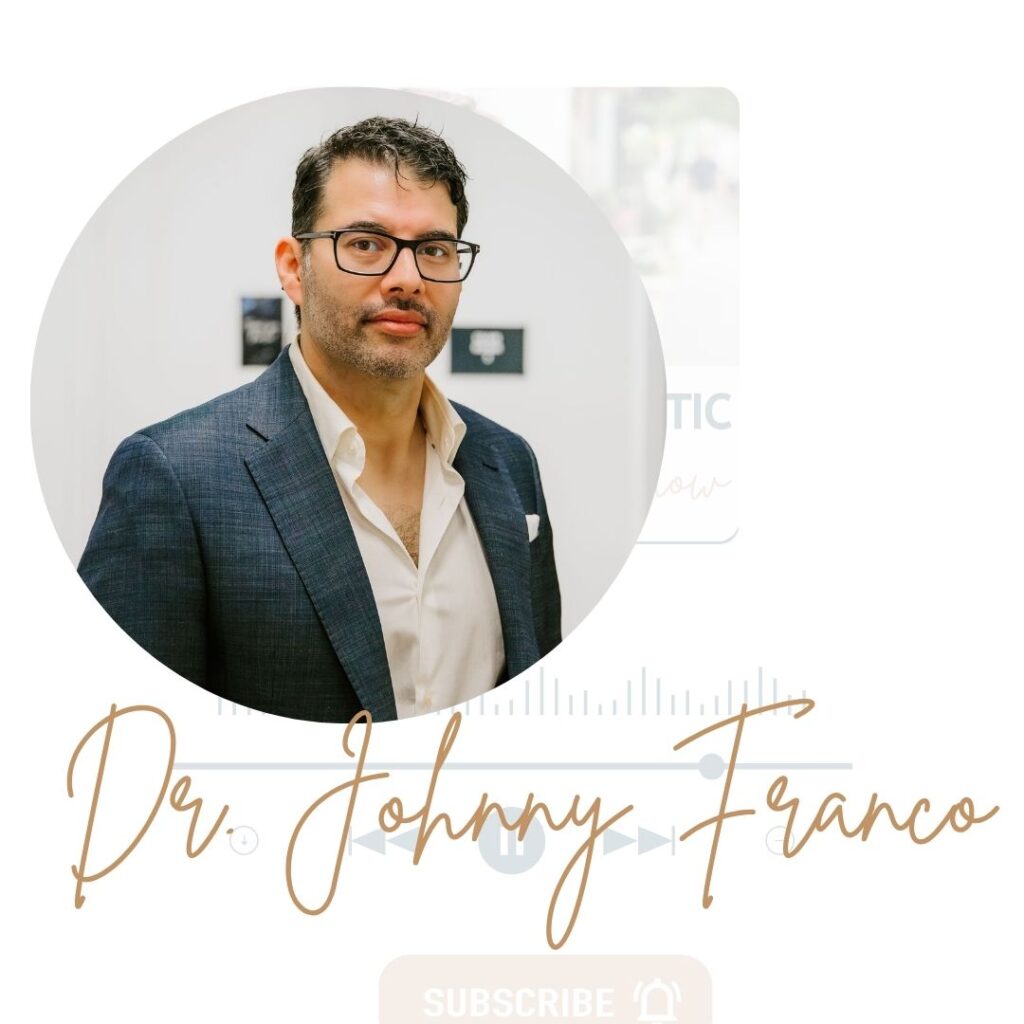
About Dr. Johnny Franco
Dr. Johnny Franco isn’t just talking theory – he’s built one of the most successful aesthetic practices in Texas using these exact strategies. His practice, Austin Plastic Surgeon, has grown to three offices across two cities and won “Best Plastic Surgery Center” in the 2023 Austin Statesman Austin Best of the Best Awards. Dr. Franco himself earned “Best Plastic Surgeon” for the sixth consecutive year.
But Dr. Franco’s expertise extends far beyond his own practice success. He serves as President of the Austin Society of Plastic and Reconstructive Surgeons and holds clinical faculty positions at The University of Texas Dell Medical School. His insights come from both hands-on practice growth and deep involvement in advancing the entire field.
Dr. Franco’s Background
Dr. Franco’s path to digital marketing mastery began with traditional medical training – a Bachelor of Science in Biochemistry from Beloit College, followed by his Doctor of Medicine degree from the University of Texas Medical Branch at Galveston. During his plastic surgery residency at Saint Louis University School of Medicine, he served as chief resident.
His commitment to excellence led him internationally for specialized training at Chan Gung Hospital in Taiwan, focusing on microsurgery for cancer reconstruction, then to Gent University Hospital in Belgium for advanced breast reconstruction and fat transfer techniques.
This combination of surgical expertise and business acumen makes Dr. Franco’s marketing insights particularly valuable – he understands both the clinical side and the business realities of aesthetic practice.
Beyond the Practice
Dr. Franco shares his knowledge through multiple channels:
Education and Training:
- Host and instructor for courses at major annual meetings (ASAPS, ASPS, TSPS)
- Reviewer for prestigious publications including Aesthetic Journal and Annals of Plastic Surgery
- National trainer for industry leaders like Revelle Aesthetics, Apex Medical, and Bioaesthetics
Industry Leadership:
- Advisory board member for Realself, Yes Doctor, Bioaesthetics, and Apex Medical
- Active member of Texas Society of Plastic Surgeons, American Society of Plastic Surgeons, and American Society of Aesthetic Plastic Surgeons
Connect with Dr. Franco
Practice Information:
- Instagram: @austinplasticsurgeon
- Website: austinplasticsurgeon.com
- Location: Austin, Texas (with multiple office locations)
Podcast:
- “Plastic Surgery Untold” – Available on all major podcast platforms
- Features conversations with leading surgeons and industry experts
- Regular episodes covering both clinical and business topics
Dr. Franco’s willingness to share his strategies openly – like he did in this comprehensive interview – reflects his commitment to elevating the entire aesthetic medicine field. His approach proves that clinical excellence and business success aren’t mutually exclusive when you have the right systems in place.
